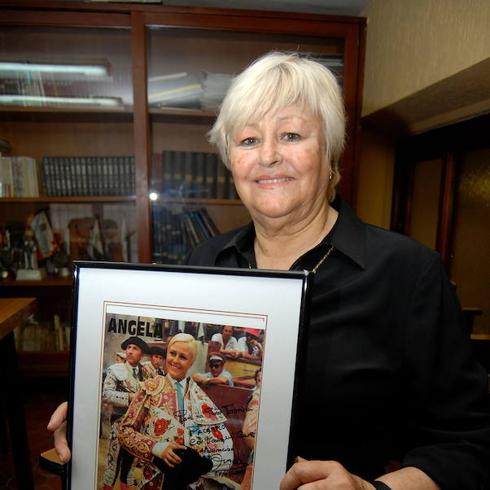

Secciones
Servicios
Destacamos

Rachel Haynes
Friday, 10 August 2018, 17:27
In 1974, Spain was still governed by a dictatorship and Francisco Franco, albeit in poor health, would live for more than a year. However that did not stop some law changes to bring the country slowly into a world of equal opportunities.
One of this steps forward came on 10 August of that year when the government decreed the suspension of the article in the Bullfighting Regulations that prohibited women from taking on a bull on foot in the ring.
This particular ban, which still allowed women to play a part in a bullfight on horseback, had been in force since 1940, however a previous prohibition had been brought in by decree in 1909, and lasted until 1934, when the brief Second Republic declared equal rights for all Spaniards.
In her book Women and the Bullring, published in English in 2003, Muriel Feiner looks at the history of women in the male-dominated world of bullfighting, not just those who aspired to become 'toreras' themselves but also women taking on other roles such as breeders, journalists, photographers, managers, artists and impresarios.
Feiner, who moved from her native New York to Spain in her 20s having fallen in love with the world of bullfighting, pays long overdue attention to women whose presence was ignored by traditional historians.
The most important female bullfighter of the 19th century, according to Feiner, was La Pajuelera, who was painted by Goya spearing a bull on horseback.
Taking advantage of the equality ruling in the Second Republic, the Palmeño Sisters, Enriqueta and Amalia Almenara, whose father ran a bullfighting school in Perpignan, earned a name for themselves in bullrings around the country in the late 1930s. During the same period, Juanita Cruz demonstrated her skills in Spain, until the Civil War forced her into exile in Mexico and a career in American bullrings.
One name linked especially to the decree of 10 August 1974, however, is Angela, the first 'torera' to earn her licence after the lifting of the ban. María de los Ángeles Hernández Gómez - Angela - was born in Alicante in 1946, but moved with her family to Algeciras. Her enthusiasm for bullfighting was such that at just 13 she jumped into the bullring at a charity event in Alicante. She then learned how to ride a horse, the only way that regulations would allow her into the ring. Other countries did not have the same rules, however, and her desire to face a bull on foot took her to Mexico, Guatemala, Panama and Venezuela. She returned to Spain in 1970 and started her campaign to lift the ban, which culminated in the decree of 1974.
Angela appeared in a bullring as a fully fledged torera in September that year in Jerez de los Caballeros (Badajoz). After struggling with repeated injuries she was forced to retire, but reappeared in the ring in America in 1986; her last bullfight was in Elche (Alicante) in 1990. She continued to work in the business however, as a representative of breeders and a manager for bullfighters. Angela died in Madrid in 2017.
Publicidad
Publicidad
Publicidad
Publicidad
Esta funcionalidad es exclusiva para registrados.
Reporta un error en esta noticia

Debido a un error no hemos podido dar de alta tu suscripción.
Por favor, ponte en contacto con Atención al Cliente.

¡Bienvenido a SURINENGLISH!

Tu suscripción con Google se ha realizado correctamente, pero ya tenías otra suscripción activa en SURINENGLISH.
Déjanos tus datos y nos pondremos en contacto contigo para analizar tu caso

¡Tu suscripción con Google se ha realizado correctamente!
La compra se ha asociado al siguiente email
Comentar es una ventaja exclusiva para registrados
¿Ya eres registrado?
Inicia sesiónNecesitas ser suscriptor para poder votar.